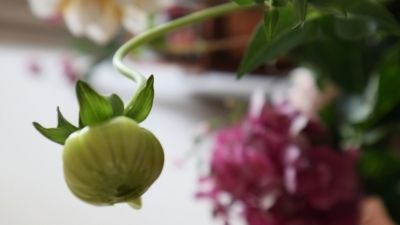"Encouraging," Not Forcing Bulbs

You can brighten your home with fresh flowers from your own bulbs if you are willing to do a little planning. Some flowering bulbs are easy to grow and require nothing more than potting and watering, while others are not quite as anxious to please. The process of forcing, or at least encouraging, bulbs to bloom is a process of mimicking the bulbs’ natural environment.
In nature, bulbs grow as perennials, propagating themselves by offsets (smaller bulbs growing from the base of mature bulb), explains Maggie Wolf, Utah State University Extension horticulturist. The older bulbs eventually die off, and the offsets grow larger every year until they mature and bloom. For tulips, daffodils and many other spring-blooming bulbs, a chilling period is required before the bulbs will flower. The natural cycle of a tulip is to grow leaves in the spring and bloom if mature; store energy into the bulb, then go dormant while the summer is hot and dry. In the early winter, when rains occur, root growth starts. When spring temperatures rise and days lengthen, the tulips grow and bloom again. It is this natural cycle we must simulate if we want to make the tulip bloom outside of its natural environment.
The easiest bulbs to force don’t require any chilling as they grow their root system she says. These include the amaryllis, paperwhite narcissus and some hyacinths. These bulbs are often packaged and sold during the winter months, and for some people these bulbs are a holiday tradition. Amaryllis can rebloom year after year if given proper care.
Tulips are probably the most difficult, but also most rewarding of all bulbs to force. Because of the large number of varieties available, tulips are available in just about any color except a true blue. Some tulip varieties have also variegated foliage for extra decorative value. Tulips come in single, double, smooth-edged, fringe-edged, open and tight shapes. Treasured for centuries, tulips provide beauty, joy and interest to novices and experts alike.
To trick bulbs such as tulips into blooming, they must be potted, chilled and then brought out into warmth and light, Wolf says. This sequence simulates the bulbs' natural environment - a cold, wet winter followed by longer, warmer days of spring.
Plant your bulbs in a pot that will allow two inches potting media under the bottom of the bulbs and allow the tops of the bulbs to be even with the pot top. Any good potting media will work. A pinch of bone meal at the base of each bulb will provide nutrients. After potting, water thoroughly and allow to drain completely. Place the pot in a cool, dark place - one that will stay between 35 and 55 F A crisper in the 'fridge will work, but don’t keep apples in the same compartment - the ethylene given off by the apples could damage the bulbs.
After 15 weeks of chilling, checking periodically to make sure the potting media is still damp, there should be sufficient root growth to supply moisture for the growing bulbs, she says. Place the pot of bulbs in a location with indirect light and at a room temperature about 60 F for a week or two. When the shoots are about 4" tall, move the pot into a bright, sunny location to prompt blooming. A room temperature of about 68 F and direct sunlight will produce the best results. When the flower buds show color, you may move the pot back into indirect light to make the flowers last longer.
Tulips, once forced, will probably not bloom again the next year, since their life cycle has been disrupted, Wolf says. It is best to discard them or place them in a little-used area of your garden. They may be able to regenerate themselves after a few years.
Bulb forcing may be considered a little tricky, but the trickiest part is finding space in your refrigerator to store them for 15 weeks, she says. There are alternatives - such as digging a trench in a well-drained area of your garden about two feet deep, lining it with loose gravel, placing the pots in, covering with them newspaper, then piling the dirt back over them. Mulch heavily over the trench, and hope that in 15 weeks you can still dig in the soil if it hasn’t frozen.
By any method possible, forcing bulbs can bring fresh life into your winter days, Wolf says. Plan ahead and try it this winter.
For more information, contact your local USU County Extension office.
Authors
Dennis Hinkamp
Related Research





